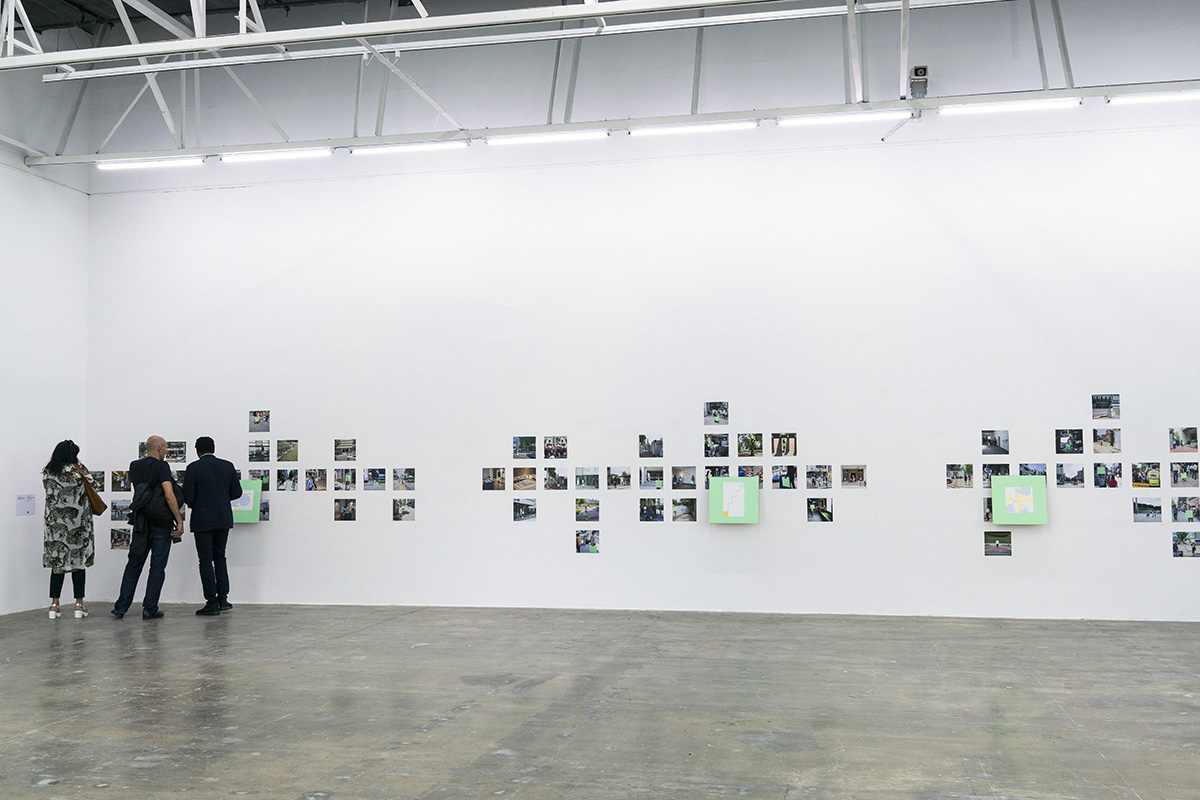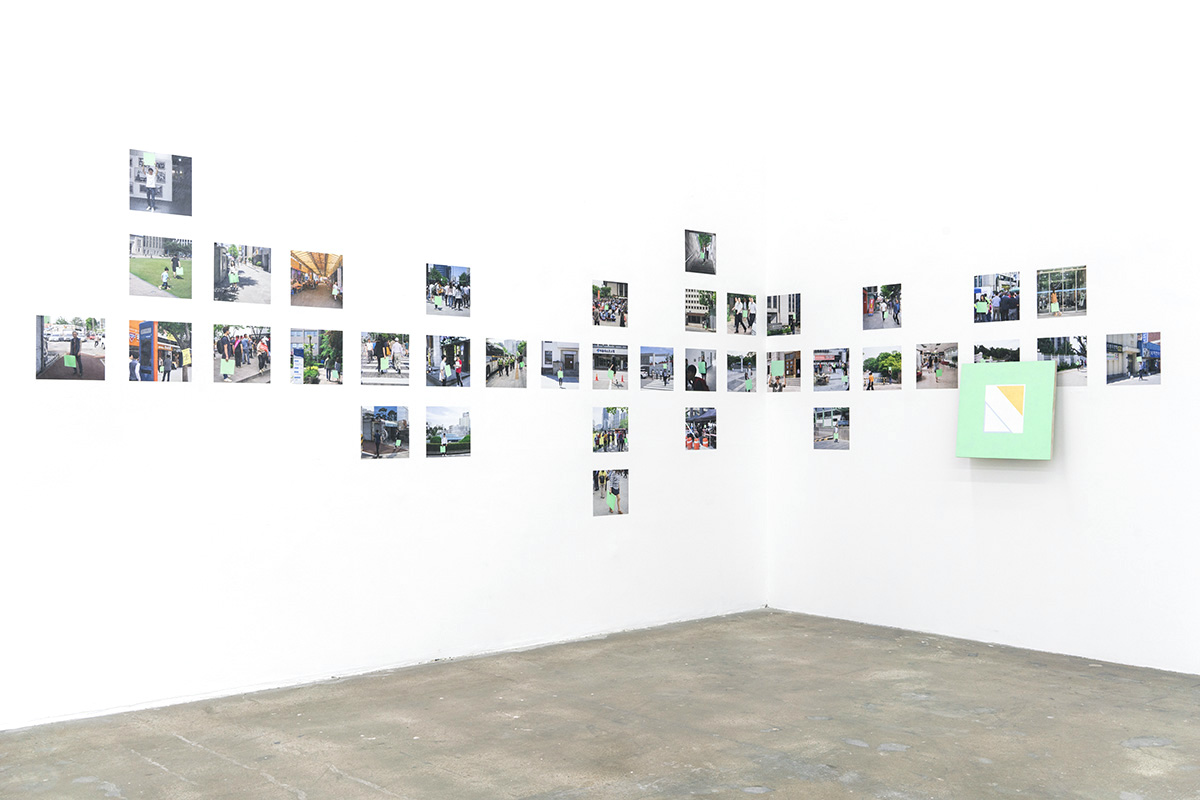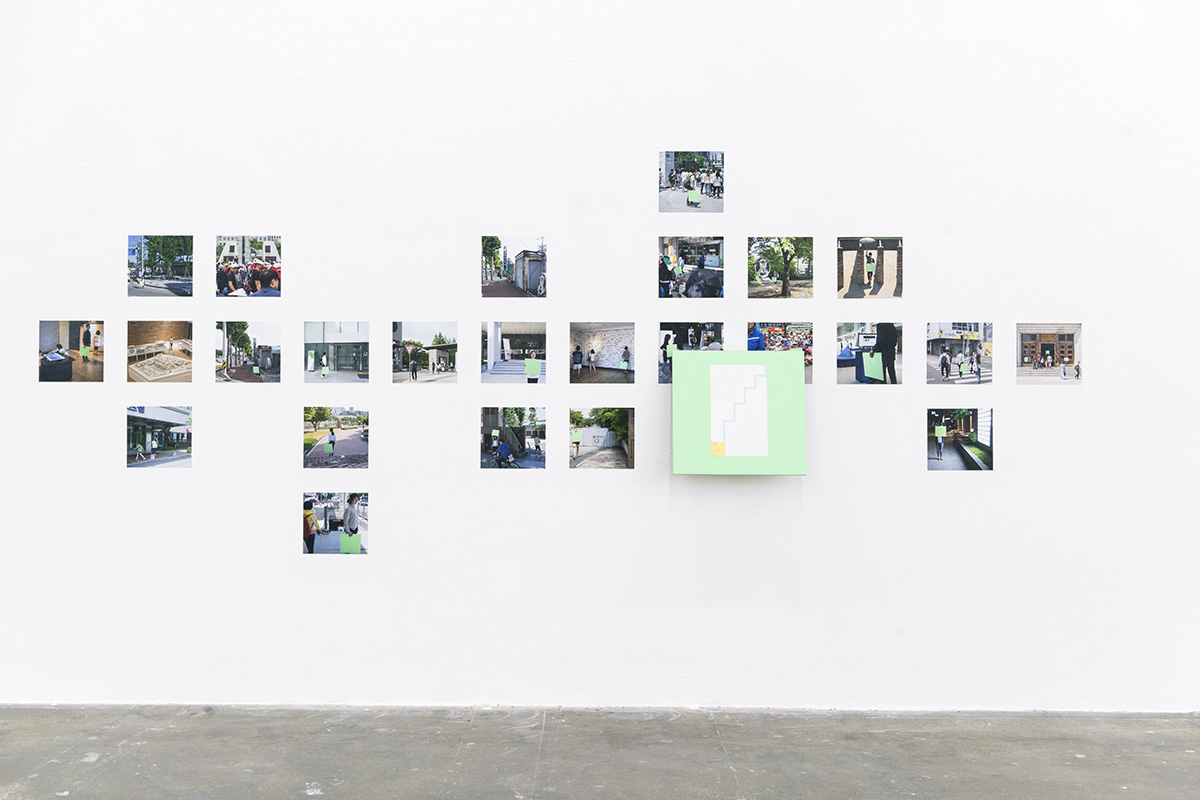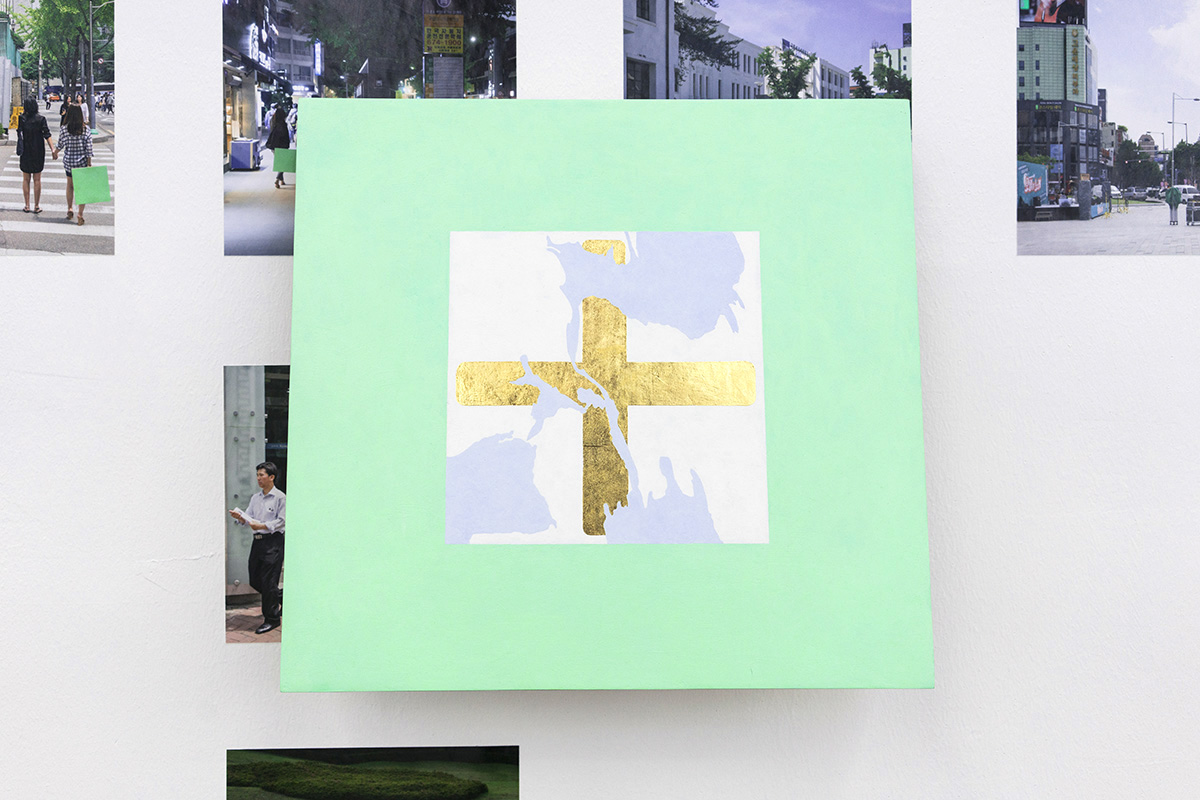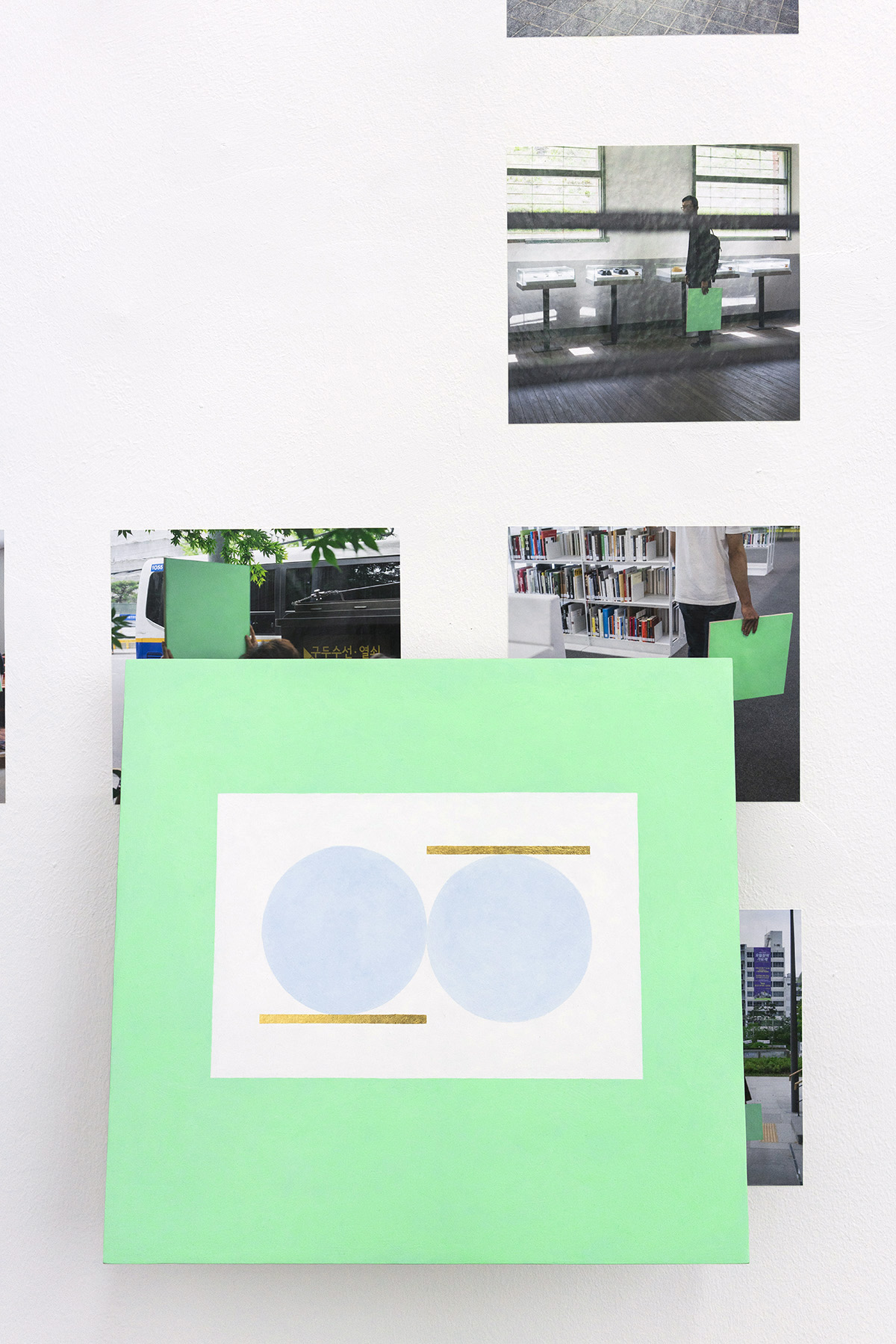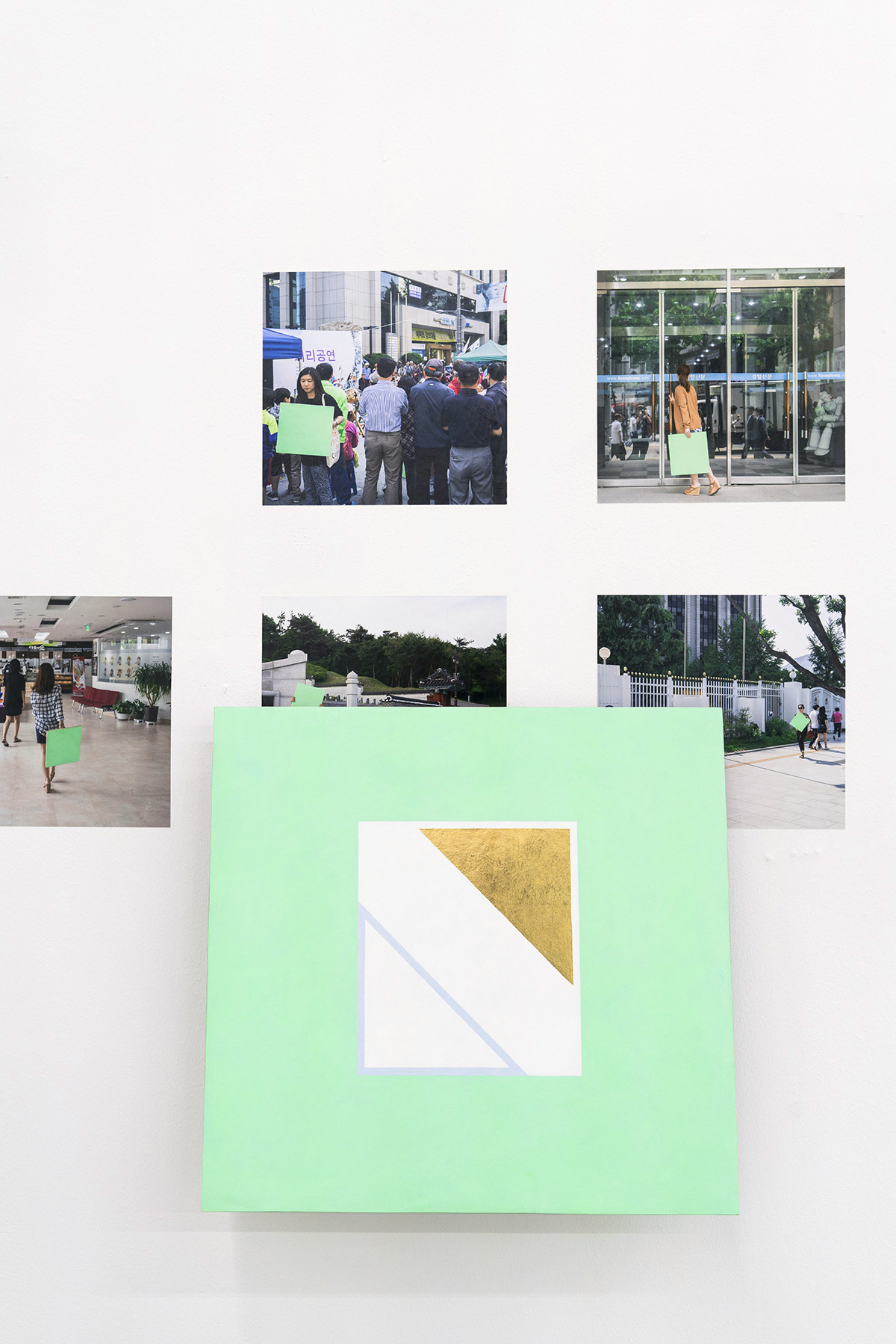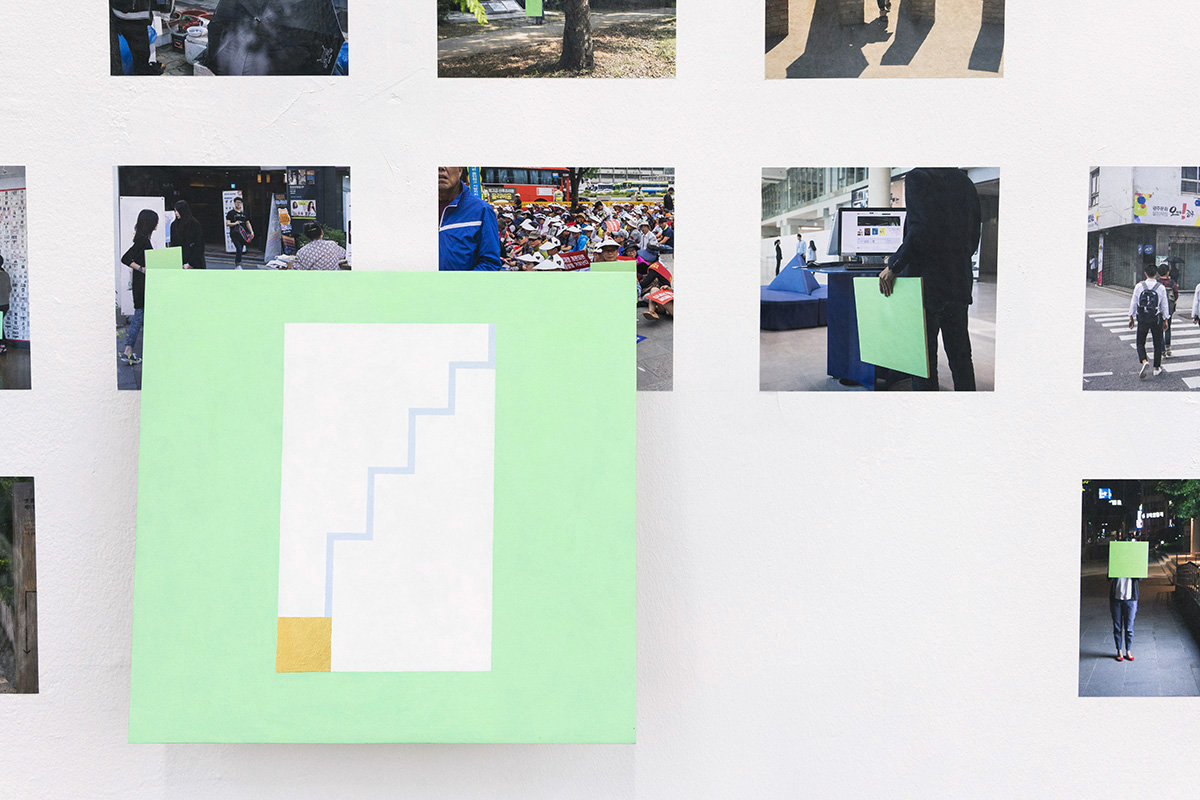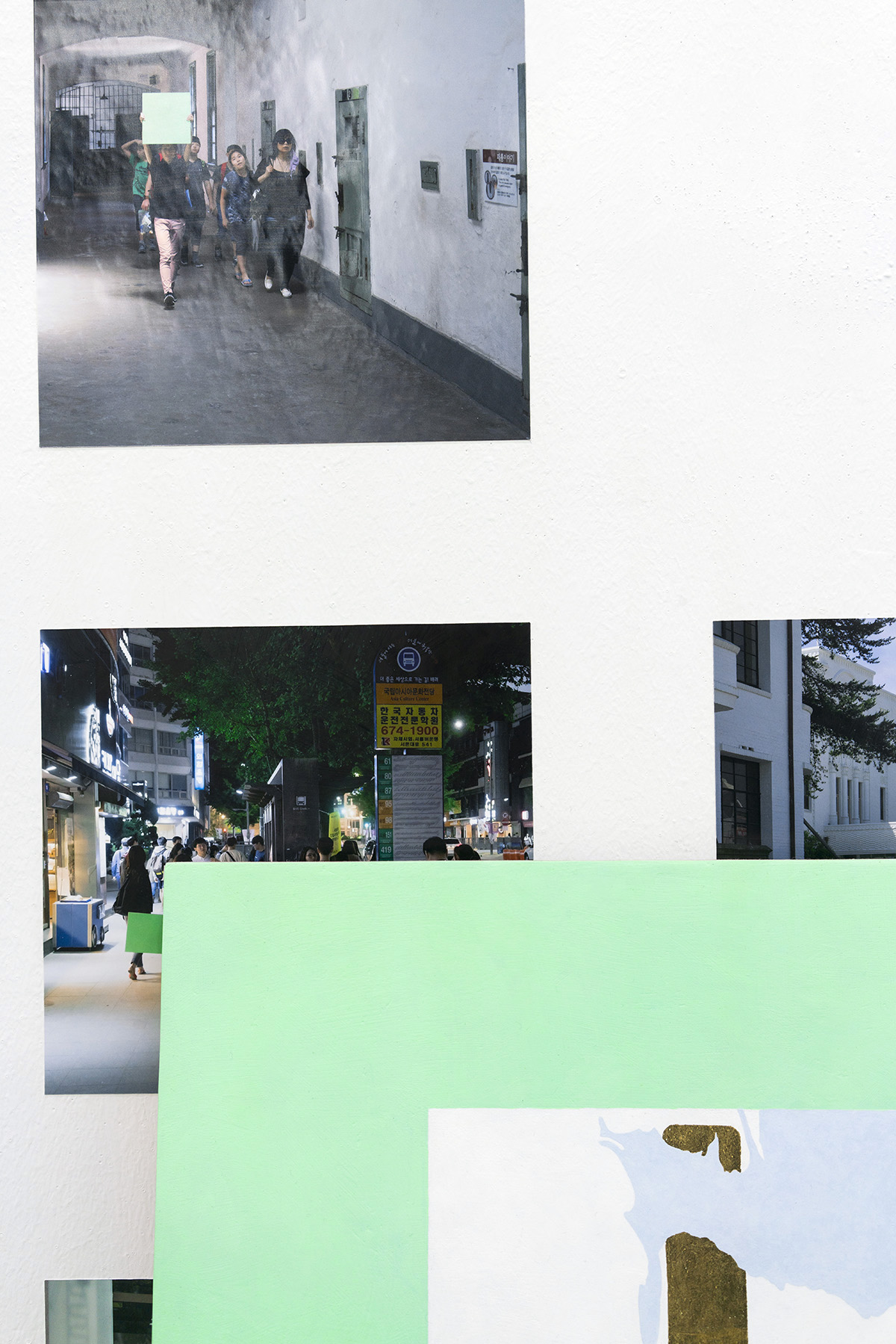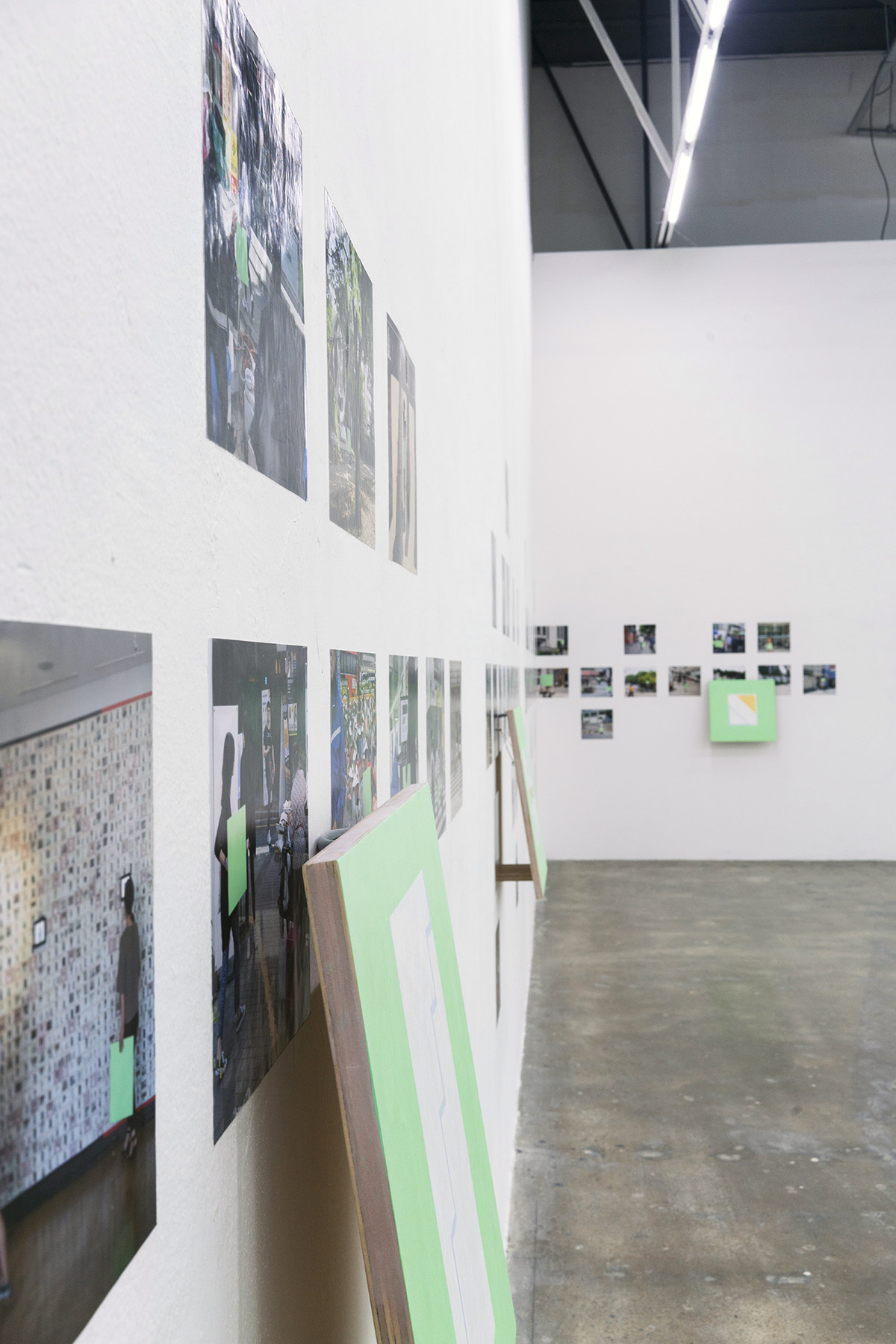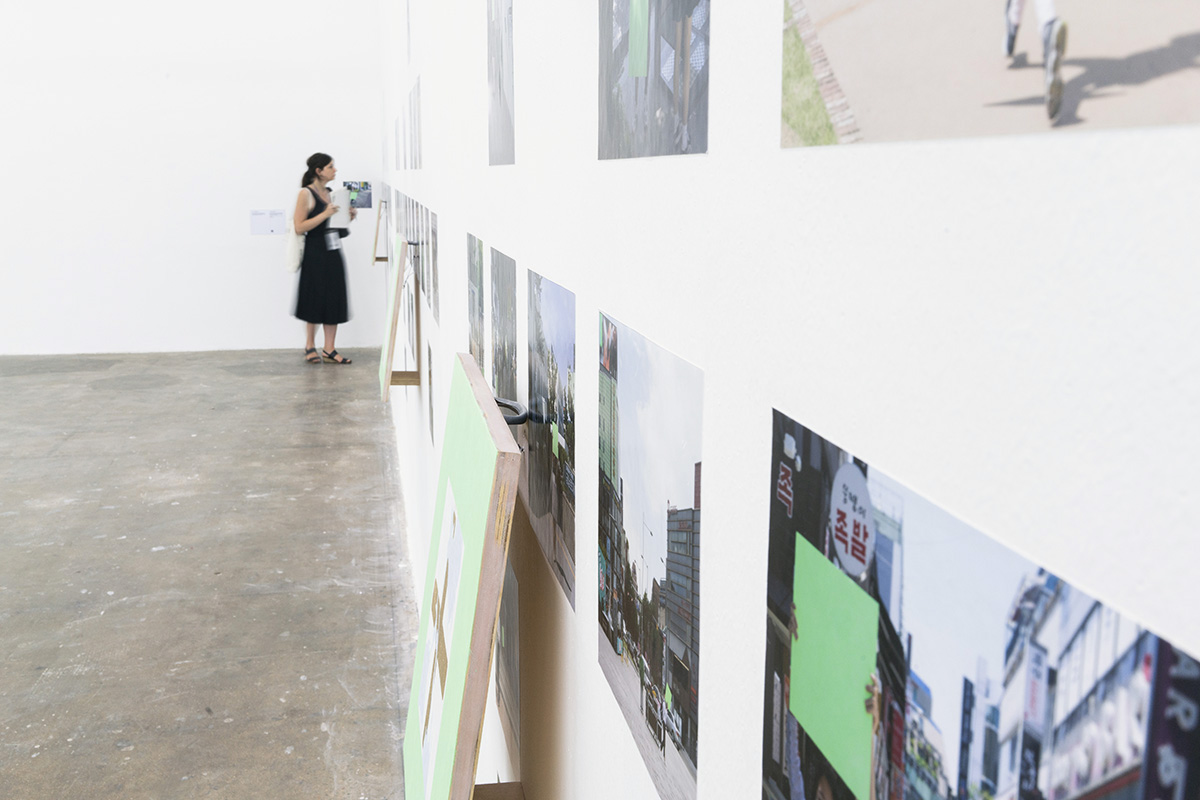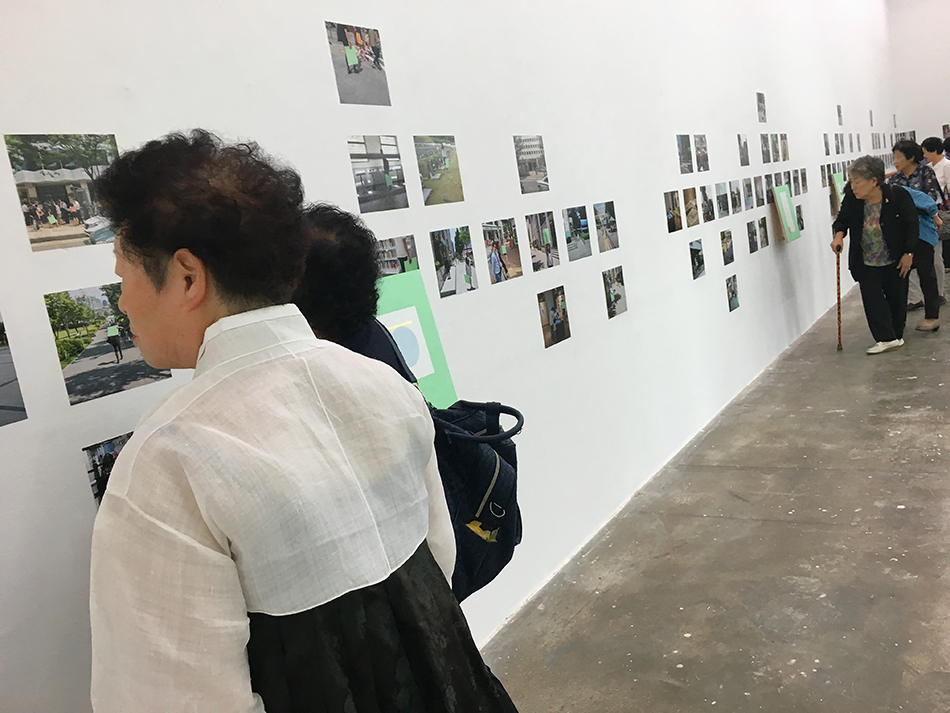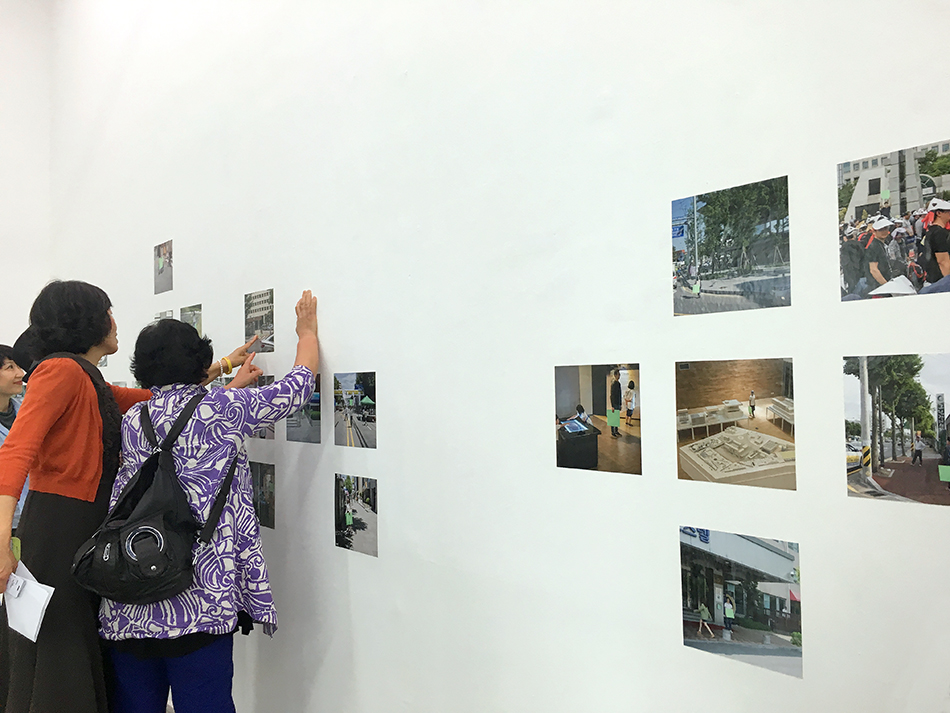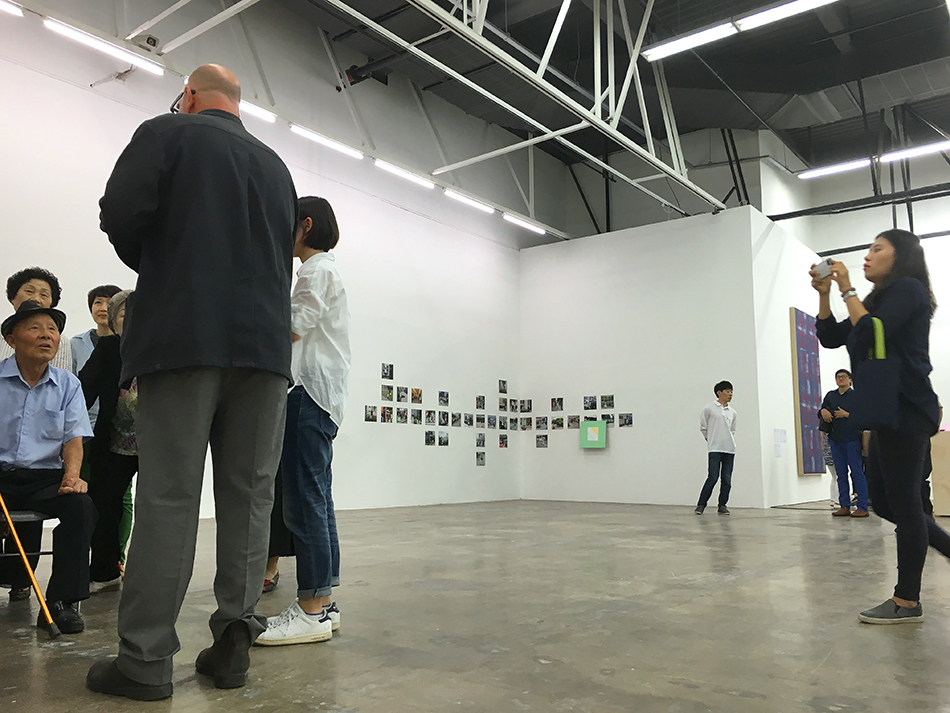Photographs of Paintings Carried to Places where the Movement for Democracy in South Korea Happened, and Four Examples of what was Produced, 2016, Gwangju Biennale 11, Commission. Gesso w/porcelain, egg tempera, and gold leaf on wood, hardware, photographs, (dimensions variable); each painted panel: 18″h x 19″w; each photograph 9″h x 9.5″w
From Gwangju Biennale’s publicity Ashford’s proposal: “A collection of photographs are hung on the wall, and in each image an individual holding a green rectilinear form is seen either standing or walking, idling or heading somewhere; presenting a painting to others. Unknown at the time, these green objects will be populated with different golden forms, yet to become visible as they are being photographed. Four examples of these paintings were then made in New York, and are presented here next to the photographs to produce an abstract narrative of what might have happened at these sites of democratic rebellion.
This project originated amongst the plethora of remembrance monuments in Gwangju, Korea, all dedicated to the rebellions against the state during the “Gwangju Uprising” of May 18 to May 27, 1980. Most cities have experienced similar revolutions, and in most cases, the power of the state and its subjugation of popular will has survived intact. In New York City, hundreds died during the labor rights rebellions at the end of the 19th century. Huge armories remain that housed the federal troops brought to control these insurgencies. Still, no memorial monuments exist to mark the workers who fought and died for greater civil rights and inclusion in society’s production.
Public memorials often coincide comfortably with state power’s ongoing apparatus, its daily oppressions, and its maintenance of inequality. To be in Gwangju today is to be continuously reminded of the possibilities of democracy, which makes feelings of solidarity in past human actions and sacrifice inevitable. When trauma becomes a monument, the dominant culture can incorporate sympathy with rebellion into passive forms of state control. It is as if we make monuments to history to forget the impact of that history on the present.
Artworks have been used throughout history to affect social life, either by elevating the unknown and subaltern into consciousness or by exposing the machinations of political oppression in newly felt ways. Between the 9th and 14th centuries, many Europeans physically carried painted icons of saints into military battles to affect the course of history.
In this project, rather than have a painted icon transform an event by exporting its supernatural power out upon a social conflict, I wanted to see if the context of remembrance and empathy for past catastrophes could push back onto the works of art that I bring to the site of conflict. I welcomed the Gwangju Uprising sites to change the outcome by asking residents to hold “unfinished” paintings in front of the many physical confrontation and brutality places in Gwangju and Seoul between government forces and Korean citizens. Some sites are officially marked, while others are entirely forgotten, but all of these places were where living people tried to change society. I proposed that those living and dead bring historical residue, and in occupying these places, they could somehow leave marks in gold, white, and blue on painted surfaces.
The paintings became finished by carrying them through the streets of cities, seemingly reversing the actions that happened before the work and I arrived. I wanted to produce a break in the traditional connection between civil disobedience and history’s formal markings, a proposition of magical reversal showing that we are still alive.”
View the GB11 catalogue here _(link)
View select photographs from the series here _(link)
I would like to thank the following people who contributed time and effort to this project: Sam Ashford. Christhian Diaz, and Brianna Leatherbury for pre-production work. Min Kyung Kim, for installation, translating my lecture, and making my time in Korea incredible overall. Jaena Kwon, Won Cha,and Simon Ko in New York and Seoul, for coordinating and finding actors. Eunice Koo, Kyudon Jang, Mingjung Jung, Yusun Jung, Hyeonah Kim, Hyunji Kwak, and Seng Man Ko as actors in Seoul. Soyoung Park, Hanbyul Kim, Minkwan Choi, Heejoo Kim, Hyejoo Jun, Ye-ryung Lee, Ryueun Kim, and Junsoo Song as actors in Gwangju. Soyoung Park, for radio interview, translation, walking, and beautiful reflection.
For more historical information on the Gwangju Uprising see _ http://timshorrock.com/documents/korea-the-cherokee-files-part-one/


